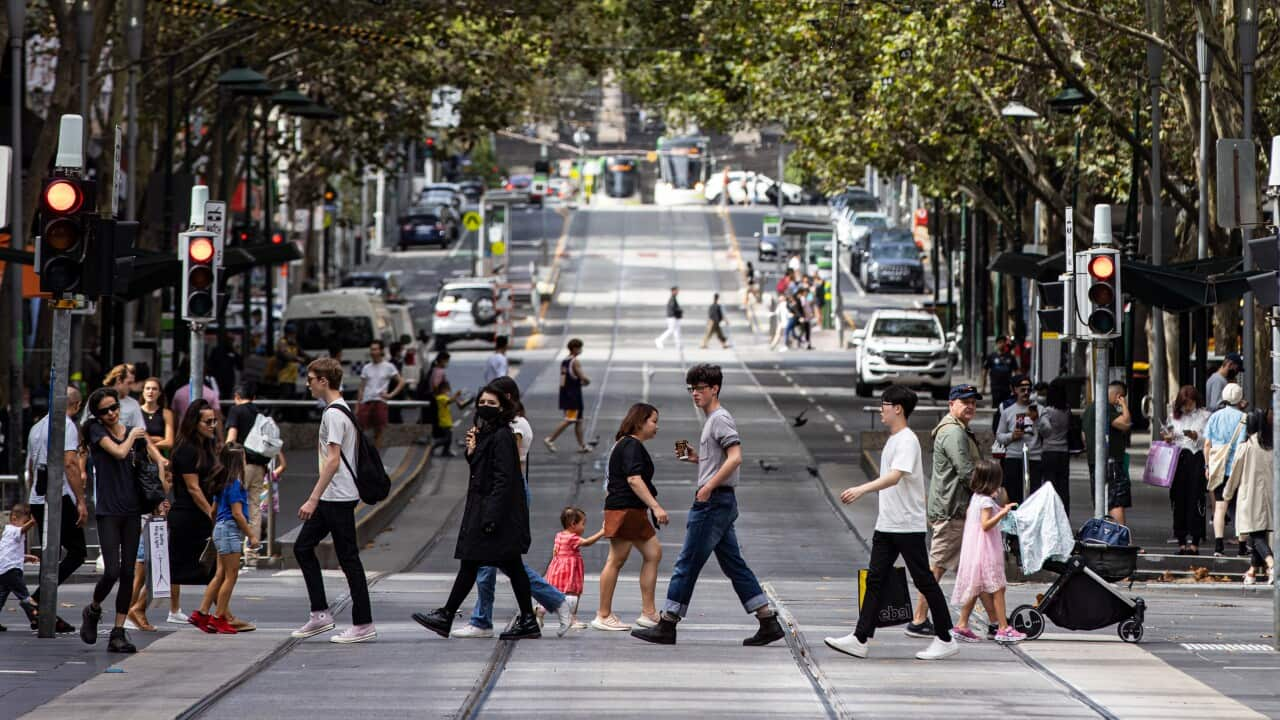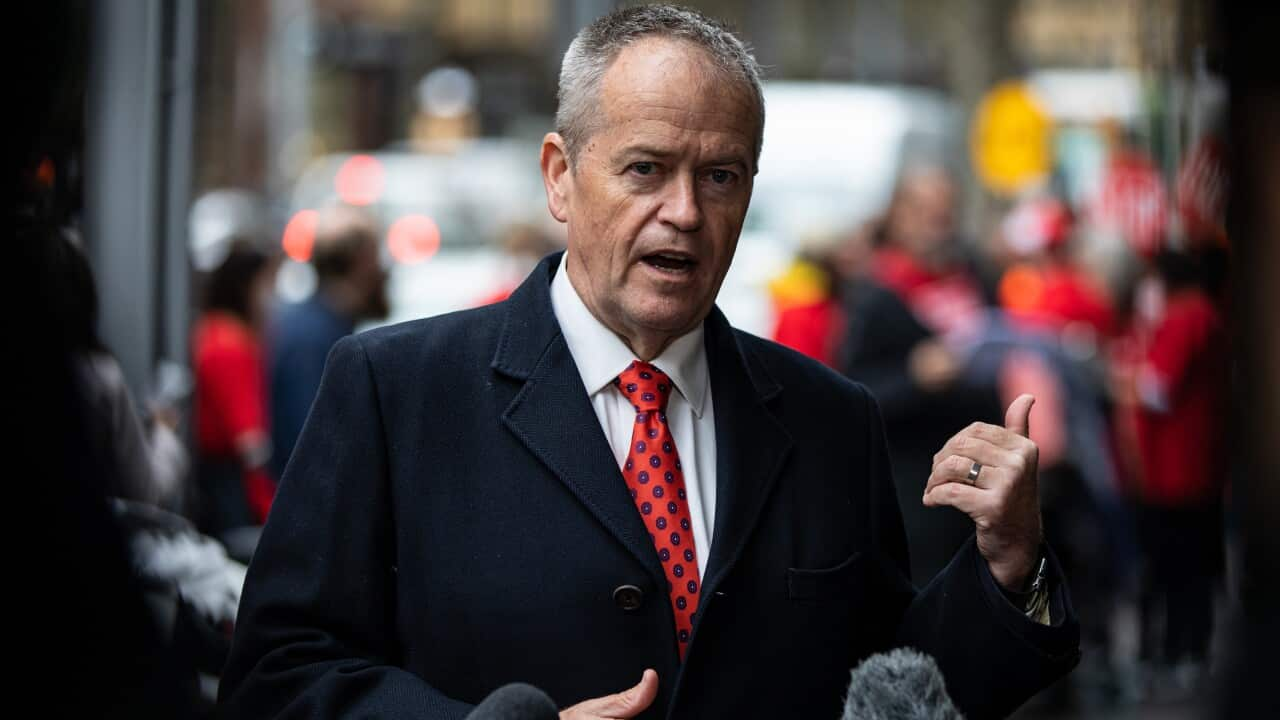Australia's unemployment rate has remained steady at 3.9 per cent for the , but advocates are calling on the government to accelerate approaches to increase the employability rates of Australians with disability.
Disability services and support organisation Onemda told SBS News only 54 per cent of the 4.5 million Australians living with a disability are involved in the workforce.
According to Onemda, of the working-age population, people living with a disability are twice as likely to be unemployed than someone without a disability.
"There is widespread misunderstanding associated with being a person living with a disability, and a lack of recognition of the value they can bring to the workforce," Onemda CEO Simon Lewis said.
"This is a time to reflect on what more needs to be done to increase employment participation for people with a disability, rather than just on the record-equalling unemployment figures released today."
"The gap is widening, and the system is currently failing Australians with disabilities."
Neha Prakash, Acting CEO of National Ethnic Disability Alliance (NEDA), called for better employment opportunities and work conditions for people with disability, especially those with poor English language proficiency from culturally and linguistically diverse (CALD) backgrounds.
"People with disability from migrant and refugee backgrounds face significant, intersectional barriers to entering and participating in the labour force," she said.
"They are repeatedly under-represented in labour force participation rates but over-represented in unemployment figures compared to other persons with disability and persons without a disability."
NEDA is also calling for federally funded employment services incorporating specialist services and inclusion experts, and a transition plan out of segregated employment settings.
The total number of people employed in Australia increased by 60,600 workers and monthly hours worked increased by 17 million hours or 0.9 per cent.
Full-time employment increased by 69,400, while the number of part-time workers fell by 8,700.
While the figures are a positive sign for the overall economy, Maureen Fordyce from Queensland-based disability advocacy group AMPARO said not all Australians have equal employment opportunities.
"AMPARO’s experience is that Queenslanders from Culturally and Linguistically Diverse (CALD) backgrounds with disability and their families confront significant additional barriers that prevent them having equitable access to important services and information, understanding their rights, exercising choice and control, and resolving concerns," Ms Fordyce said.
"People from CALD backgrounds with a disability can experience discrimination across many areas of life, this includes experiencing higher levels of unemployment.
"They often experience attitudinal and structural barriers that limit their participation in the workforce. Physical access to workplaces unfortunately is still a common barrier to open employment. We need structural systemic changes, education and improved performance by disability employment agencies."
Economist Matt Grudnoff from the Australia Institute said while the unemployment rate is low, the Australian economy is still not out from the effects of the pandemic.
"Looking at the change in the 15+ population month on month is interesting," Mr Grudnoff said.
"It is now growing faster than during the pandemic levels but is not back to where it was pre-pandemic.
"This means the population is still well below where it would have been without the pandemic."
The graph below from the Australia Institute shows the month-on-month change in the 15+ population.

Source: Australia Institute
The unemployment rate was already the lowest in almost 50 years.
But economists have warned against interpreting unemployment rates as telling the whole story of Australian workers' conditions.
The data released from the ABS showed wages grew 0.7 per cent in the March quarter and 2.4 per cent over the year, but failed to keep pace with over the year.
Prime Minister Anthony Albanese, who was the leader of the Opposition at the time, blamed the Morrison government for economic mismanagement.
"Most are the inevitable end result of a decade of cuts, mismanagement, neglect and a government that's just focused on itself," Mr Albanese said in May.
"Under Scott Morrison, real wages are plummeting while the cost of living is skyrocketing."
Unemployment falls as minimum wage increases
After the release of the previous unemployment rate figures this year, Mr Albanese called for a rise in the minimum wage.
On Wednesday, the Fair Work Commission ruled the nation's lowest-paid workers would receive a raise equivalent to $40 a week for full-time workers from July 1.
Mr Albanese said the 5.2 per cent wage increase was the right decision. "When you take into account the economic impact of this decision, it is the correct one," Mr Albanese told ABC radio on Thursday.
"[The commission] agreed effectively with the government submission, that the lowest-paid workers - who were on just $20.33 an hour (and) will now have that increase by just $1.05 an hour - didn't deserve a real wage cut."
The rise in the minimum wage will take effect in July except for aviation, tourism and hospitality sector workers, who will have to wait until October.
ACTU Secretary Sally McManus said the ruling was welcomed by 2.6 million impacted workers, which is 25 per cent of the Australian workforce.
"We think it is going to make a significant difference to the pressures that low-paid workers are under with the cost of living rising," Ms McManus said.
"The union movement fought so hard for this increase across pretty heavy crosswinds. We also had to oppose what the employers were arguing for which was very significant real wage cuts at a time when their profits are up 20 per cent and productivity is up as well as unemployment being low.
"This decision is one that is reasonable and it is fair."
Not everyone has welcomed the wage rise, with Australian Industry Group chief executive Innes Willox claiming it will fuel inflation.
"This wage increase will put a lot of pressure on business because they're already under pressure with energy cost increases, interest rate rises and concerns around their own inflation," Mr Willox told ABC TV.














